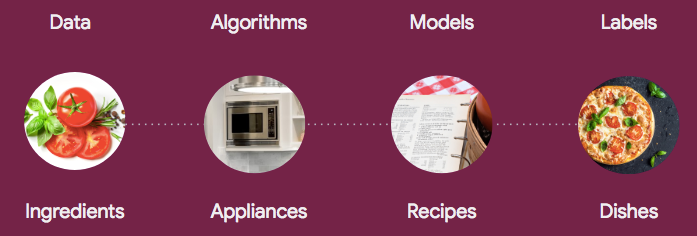Machine learning — Is the emperor wearing clothes?
Algorithms for hipsters
These days, no data science hipster is into the humble straight line. Flexible, squiggly shapes are all the rage among today’s fashionable crowd (you may know these as neural networks, though there isn’t much that’s neural about them — they were named rather aspirationally more than half a century ago and no one seems to like my suggestion that we rename them to “yoga networks” or “many-layers-of-mathematical-operations”).


Neural networks may as well be called “yoga networks” — their special power is giving you a very flexible boundary.
Those gobbledygook algorithm names tell you what shape of fence they’re going try to put in your data. If you’re an applied machine learning enthusiast, it’s okay if you don’t memorize them — in practice you’ll just shove your data through as many algorithms as you can and iterate on what seems promising. The proof of the pudding’s always in the eating… so let’s eat.


Model
Once the fence in place, the algorithm is finished and what you get out of it is what you wanted along: a model, which is just a fancy word for recipe. It’s now some instructions for the computer to use to convert data into a decision next time I show it a new cup of tea. If the data lands in the blue bit, call it blue. In the red bit? Call it red.


Label
Once you put your freshly-minted model into production, you use it by feeding the computer an age and review score. Your system looks up which region that corresponds to and it outputs a label.


How do we know if it works? The same way we know if a bunch of monkeys on typewriters wrote some Shakespeare. By checking the output!
The proof of the pudding is in the eating.
Test your system by running a bunch of new data through it and make sure it performs well on it. In fact, do that anyway, regardless of whether an algorithm or a programmer came up with that recipe for you.
Summary
Here’s a handy visual summary for you from another of my articles:


Machine learning for poets
If that was confusing, maybe you’ll like this analogy more: A poet picks an approach (algorithm) to putting words on paper. The approach determines the resulting poetic form (boundary shape) — will it be a haiku or a sonnet? Once they’re finished optimally fleshing out their sonnet, it is now a poem (model). How is a poem a recipe? Beats me — I’m open to suggestions. The rest of the analogy works, though.
ML models vs traditional code
I’d like to point out that the recipe isn’t all that different from code that a programmer might have written by eyeballing the problem and manually making up some rules. Quit anthropomorphizing machine learning already. A model is conceptually the same kind of thing as regular code. You know, the kind of recipe that’s handcrafted by some human armed with an opinion and a caffeine source.
Quit anthropomorphizing machine learning already.
And don’t go around saying that retraining — jargon for rerunning the algorithm to adjust the boundary as new examples are gathered — makes it creature-like or inherently different from your programmer’s standard work product. Humans can sit there tweaking the code in response to new info too. If you’re worried that your machine learning system now does the update much faster, invest in good testing or avail yourself of a long time.sleep().
Is this all there is to it?
Yeah, pretty much. The hard part of ML engineering is installing packages and then wrangling your hairy beast of a dataset so a finicky algorithm deigns to run on it. This is followed by an eternity of fiddling with the code settings (don’t let the noble name “hyperparameter tuning” fool you) until voila! A model! One that turns out not to work when you evaluate its performance on new data… and you’re back to the drawing board, over and over, until finally the heavens open up and your solution stops embarrassing itself. That’s why it’s so important to hire failure-tolerant personalities for this endeavor.
Don’t hate it for being simple. Levers are simple too, but they can move the world.


If you were expecting magic, well, the sooner you’re disappointed, the better. The death of superstitious excitement for sci-fi makes way for rebirth: excitement for getting cool things done. Machine learning may be prosaic, but what you can do with it is incredible! It lets helps you write the code you couldn’t come up with yourself, allowing you to automate the ineffable. Don’t hate it for being simple. Levers are simple too, but they can move the world.
